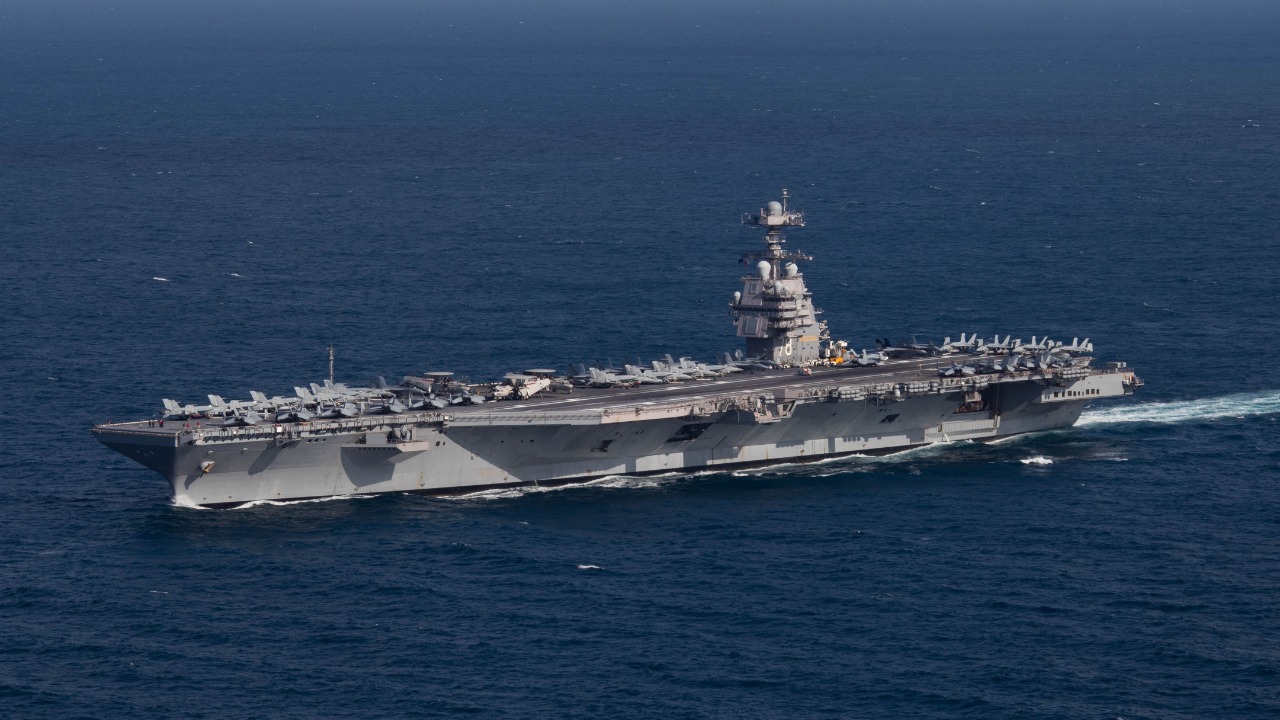
The United States has recently made a significant move in its naval operations by deploying a 9,000-ton destroyer in close proximity to Venezuela. This strategic positioning allows the vessel to effectively monitor and track submarines in the region, thereby enhancing the US’s ability to assess underwater threats in these strategically sensitive waters.
The Deployment of the Destroyer
The decision to deploy the 9,000-ton destroyer near Venezuela is a calculated move by the United States. The positioning of the vessel is ideal for regional surveillance, enabling the US to keep a close watch on naval activities in the area. The timing of the deployment, on October 26, 2025, aligns with immediate operational needs, suggesting a response to perceived threats or a strategic shift in US naval policy.
The destroyer’s approach to Venezuelan waters has been carefully planned to ensure effective monitoring. Its proximity to the South American nation allows for rapid response to any potential threats, while also serving as a deterrent to hostile activities in the region. This deployment is a clear demonstration of the US’s commitment to maintaining security in the region.
Key Specifications of the Vessel
The destroyer’s tonnage, exactly 9,000 tons, is a testament to its role in modern naval architecture for heavy-duty operations. This weight class is indicative of a vessel designed to withstand challenging conditions and perform a variety of tasks, from surveillance to direct combat. The design features of the destroyer are tailored to support deployment in contested areas like those near Venezuela.
These features include advanced radar systems, missile launch capabilities, and robust defensive measures. The vessel’s design also allows for the accommodation of a large crew, ensuring that it can sustain long-term operations without the need for frequent resupply. This makes it an ideal platform for extended surveillance missions.
Submarine Tracking Capabilities
The 9,000-ton destroyer is equipped with state-of-the-art sonar and sensor systems for underwater detection, making it highly effective in tracking submarines. These capabilities are crucial in the waters near Venezuela, where the presence of hostile or unknown submarines could pose a significant threat. The destroyer’s advanced technology is a core asset in these scenarios, providing real-time data on underwater activities.
This submarine tracking function is integral to the broader underwater threat assessment in the deployment zone. By monitoring submarine movements, the US can gain valuable insights into potential threats and respond accordingly. This capability enhances the overall security of the region and contributes to the stability of international waters.
Strategic Positioning Near Venezuela
The choice of location for the destroyer’s operations on October 26, 2025, is highly strategic. By positioning the vessel close to Venezuela, the US is able to monitor activities in the region more effectively. This proximity to Venezuelan territorial waters also sends a clear message about the US’s commitment to regional security.
The implications of placing a 9,000-ton destroyer in this location are significant. It serves as a deterrent to potential threats and underscores the US’s readiness to respond to any hostile activities. This strategic positioning is a clear demonstration of the US’s commitment to maintaining stability in the region.
Operational Role in Regional Waters
The destroyer’s integration into US naval patrols close to Venezuela is a key part of its operational role. Its 9,000-ton frame provides the endurance needed for extended missions, making it a valuable asset in the region. The vessel’s capabilities enable it to perform a variety of tasks, from surveillance to direct combat, contributing to the overall security of the region.
Since its deployment on October 26, 2025, the destroyer has been involved in ongoing submarine tracking missions. These operations are crucial in maintaining a clear picture of underwater activities in the region, allowing the US to respond effectively to any potential threats.
Broader Naval Context
The destroyer’s submarine tracking abilities are directly linked to US interests in the waters near Venezuela. By maintaining a robust naval presence in the region, the US is able to protect its interests and ensure the stability of international waters. The deployment of the 9,000-ton destroyer on October 26, 2025, marks a significant escalation in this naval presence.
This move is indicative of a broader shift in US naval policy, with a greater emphasis on submarine tracking and underwater threat assessment. By deploying advanced vessels like the 9,000-ton destroyer, the US is demonstrating its commitment to maintaining security in the region and responding effectively to potential threats.
For more information on the deployment of the destroyer, visit Interesting Engineering.
More from MorningOverview